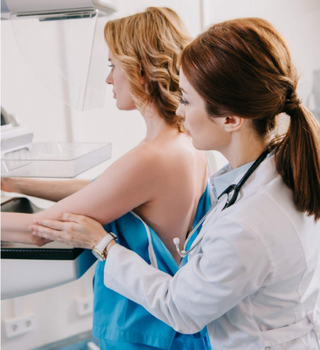How NHSX is transforming screening programmes with digital technology

In October 2019, Professor Sir Mike Richards published his independent review of the adult screening programmes in England. These programmes are a national asset and they constitute some of the most effective interventions offered by the NHS. In recent years, however, some of the screening programmes have faced a number of adverse incidents and there have been some worrying reductions in the uptake of screening in the population. Sir Mike’s report makes a series of recommendations for how to address these issues, including several that relate to the IT systems on which screening depends.
Sir Mike’s recommendations set out a clear role for technology in improving the delivery of screening, so as a public health doctor I was delighted when NHSX confirmed earlier this year that screening would be one of our flagship programmes of work.
What do we need our screening technology to do?
Any screening programme needs an IT system that does three things. First, it must identify which people are eligible for screening at any moment in time. Second, it must manage screening participants through their screening journey from invitation and testing through to diagnosis, treatment, results and follow-up. And finally, it must collect and collate data about the outcomes of screening, both for individual screening participants and for the programme as a whole.
In England, many of these IT systems are outdated and unconnected. As a result, they are a cause of duplication of effort and expenditure, and they lead to frustration among screening participants and staff. Over the next few years, the Digital Transformation of Screening programme will upgrade this technology to modern standards.
Our aims
Starting with cervical screening and breast screening, our principal aims as a programme are to
- ensure that nobody who is eligible for screening is missed and that everyone with an abnormal screening result is followed up;
- increase attendance of those who have been invited and choose to be screened, particularly those in lower socioeconomic groups and people who are socially excluded; and to
- improve the user experience for screening participants, for screening staff, and for everyone who is working to improve the quality and efficiency of the screening service.
Our approach
Our approach will be based on the principles set out in the Secretary of State’s Tech Vision. So, for example, we will aim to use existing components such as Gov.UK Notify and the NHS eReferrals Service, and we will seek to re-use any components we develop for one screening programme in the other screening programmes.
Our team is drawn from NHS Digital, NHS England and NHS Improvement, NHSX and Public Health England. It includes a wide range of professionals including clinical experts, programme managers, user researchers, software developers and public health specialists.
Next steps
Although our programme is still in its infancy, we have already begun work to address the recommendations about screening IT systems in Sir Mike’s report. For example, we are setting out a roadmap for delivering new screening IT systems and for improving access to screening - including through using text messages.
Based on the Government’s agile delivery principles, we have consolidated the discovery work that has been completed on breast screening and cervical screening, and we are currently developing a new call/recall system for cervical screening.
More recently, we have started a discovery on the data and technology requirements that will be needed to support targeted screening, which is where screening is offered to people at higher than average risk of developing the disease or condition they are being screened for.
If you’d like to get involved with our work please contact DigitalResearch@nhsx.nhs.uk